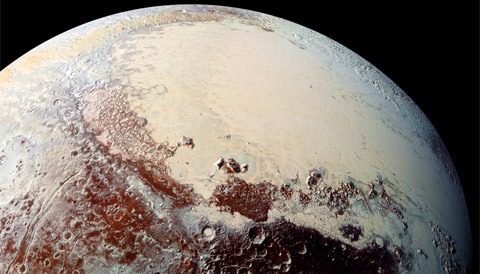The Sputnik Planita and Cres Impact on Pluto


Introduction to Sputnik Planitia
Sputnik Planitia, a significant region on Pluto’s surface, is characterized by its immense pear-shaped basin, which serves as a focal point for scientific inquiry. This depression is not merely a feature of topographical interest; its origin and formation provide profound insights into the planetary dynamics of the dwarf planet. This blog post aims to explore the nature of Sputnik Planitia's formation and its implications for our understanding of Pluto.
The Impact Mechanism Behind Sputnik Planitia
Recent hypotheses suggest that the topographic shape of Sputnik Planitia can be explained through an impact mechanism. This theory posits that a differentiated impactor, approximately 730 km in size and composed of ice and rock, collided with Pluto at a low velocity. This impact did not produce a cold, rigid crust; instead, it revealed a more dynamic geological history involving the interactions between rock and ice.
Using three-dimensional hydrodynamic simulations, researchers have modeled realistic collisions to recreate the exceptional morphology of Sputnik Planitia. These simulations depict a scenario where the impactor penetrates a subsolidus Pluto target, subsequently generating a geological region composed of both the impactor material and the structural alterations from the impact.
Geological Implications of the Findings
The creation of Sputnik Planitia as a new geologic region signifies that impacts can lead to diverse geological phenomena on celestial bodies. The captured rocky core from the impactor, integrated within the icy surface, suggests complex interactions and layering that may not have been previously considered in studies of Pluto's geology. Furthermore, its alignment near the Pluto-Charon axis raises intriguing questions about the gravitational interactions between these two celestial bodies.
The implications of these findings extend beyond Sputnik Planitia itself. They contribute to our broader understanding of crater formation not only on Pluto but across other planetary bodies. Such insights ultimately enhance our comprehension of planetary evolution and the intricate processes that shape extraterrestrial landscapes.
Conclusion
In conclusion, the exploration of Sputnik Planitia's impact origin via innovative modeling techniques has opened up new avenues for research. By explicating the dynamics of the impact process on Pluto, scientists are gaining a clearer picture of the mechanisms that govern the formation of complex geologic structures. As we continue to investigate these findings, the mysteries of Pluto and its basin, Sputnik Planitia, may reveal further secrets of the solar system's history.
